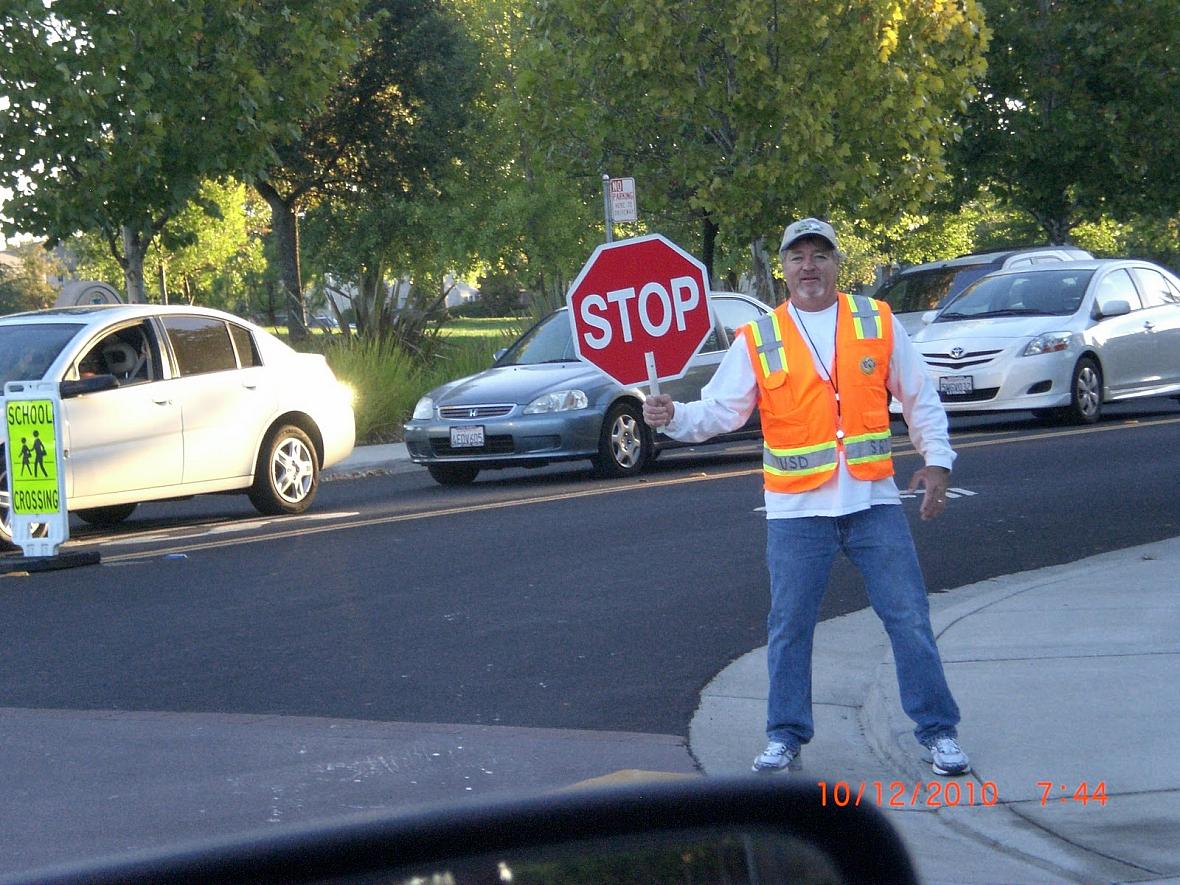Keep on walkin' on
The series "Streetwise: Walking & Biking In Natomas" will examine whether efforts to create a healthy, walkable and bikeable community in Natomas have been successful.
Part 1: Building a better Natomas
Part 2: Safer routes for students
Part 4: Keep on walkin' on

Marc Laver’s daughter was nearly hit by a car on the way to school the second day of kindergarten in 2009.
The Lavers’ wasn’t the first close call at Natomas Park Elementary School. In fact, California Highway Patrol records show three accidents where pedestrians were hit by vehicles in the morning, in front of the then year-round campus, in August 2007, September 2008 and June 2009.
“The school district was too bankrupt to hire a crossing guard, so I voluntarily did it,” said Laver.
Armed with a safety vest, whistle and handheld stop sign supplied by the district’s Safe Routes To School coordinator, Laver helped manage traffic at the busy intersection of Gateway Park Boulevard and North Bend Drive for two years. At times, other parents helped Laver - who only missed his post when sick.
“So few kids walk nowadays,” he said. “It was very clear it was not safe out there, based strictly on the volume of traffic.”
MORE HOOFIN’ IT
A survey conducted by THE NATOMAS BUZZ, as part of this special series on walking and biking in Natomas, confirmed most parents drive their children to school. The survey also found the second largest percentage of parents walk or bike to school with their children, while fewer youngsters walk alone to school or carpool.
According to numbers collected by the North Natomas Transportation Management Association, more students have started to walk to school.
“Over the past two school years, 2009-10 and 2010-11, our numbers show an increase from 773 students walking on a weekly basis at five elementary schools, to 904 students walking on a weekly basis,” said Mellissa Meng, NNTMA school programs manager. “These numbers are 23 percent and 24 percent, respectively, of the total school enrollments.”
According to Meng, this data reflects the average number of children who get to school by an alternative mode of transportation other than being driven or carpooled, weekly, over the whole school year, including the best and worst weather of the year.
“This ranges from 41 percent of the student population walking … to a low of 5 percent … when the weather is cold and rainy,” she said.
The nonprofit North Natomas TMA is funded by assessments paid by property owners north of Interstate 80 and operates several programs meant to encourage more children to safely walk - and bike - more often. For example, during the May Is Bike Month campaign earlier this year, students at eight north-area schools rode 44,864 miles - a 131 percent increase over the previous year.
ON THE ROAD AGAIN
The North Natomas TMA started mainly as a shuttle service for Natomas-area residents commuting to downtown - a program which has expanded as the result of reduced bus service to Natomas and the delayed light rail line. Both the North Natomas TMA and its counterpart, the South Natomas Transportation Management Association have programs which encourage area residents to drive less to work - and it seems to be working.
THE NATOMAS BUZZ survey showed only 62 percent drive alone to work. That number is down compared to U.S. Census data which showed nearly 75 percent of workers 16 years and older drove alone to work in 2000 and (when the Natomas population had nearly doubled) more than 78 percent in 2009.
“Just this year we rolled out a capital improvements program whereby office buildings apply for matching funds to purchase things for buildings to promote alternative modes of commuting like bike racks or lockers,” said Jason Vitaich, executive director for the South Natomas TMA, which focuses on south-area employment centers.
THE SAFETY FACTOR
The Natomas region may have been designed with biking in mind, but THE NATOMAS BUZZ survey shows more area residents are out walking than riding.
Only 7 percent bike daily and 22 percent cycle three to five times a week, according to survey responses. Walkers and runners, on the other hand, reported double the numbers with 22 percent hoofing it daily and another 41 percent out and about three to five times a week.
Survey respondents cited safety as the No. 1 challenge to biking in the area and ranked the Natomas arterial roadways and major intersections on a scale of either “safe,” “so-so” or “not safe.”
Survey results showed the Northgate corridor is considered the least safe. CHP accident data confirm more accidents between pedestrian and cyclists occurred on Northgate Boulevard from 2000 to 2010 than any other street in Natomas.
Survey takers felt Garden Highway was the second most dangerous road followed by San Juan Road Road; intersections along Northgate and Truxel were ranked as the least safe. Common complaints by survey takers included sharing the road with drivers who speed and those who run red lights.
“I wish we could go everywhere on our bikes, but there’s a lot of traffic and cars go by fast on Del Paso,” wrote one person. “I have young kids and I’m still afraid of taking them on the overpass on Del Paso so instead of biking to the North Natomas library, we drive.”
Those who completed THE NATOMAS BUZZ survey also commented on infrastructure such as cracked bikeways, unfinished trails and bike paths that end abruptly. And there were kudos.
“I love all the different trails and bike paths, you can ride for hours,” wrote one. “My favorite is a ride on the path by the levee with my 7 year-old and then stop at Bella Bru for breakfast (or lunch or dinner). In the summer, we ride even more.”

